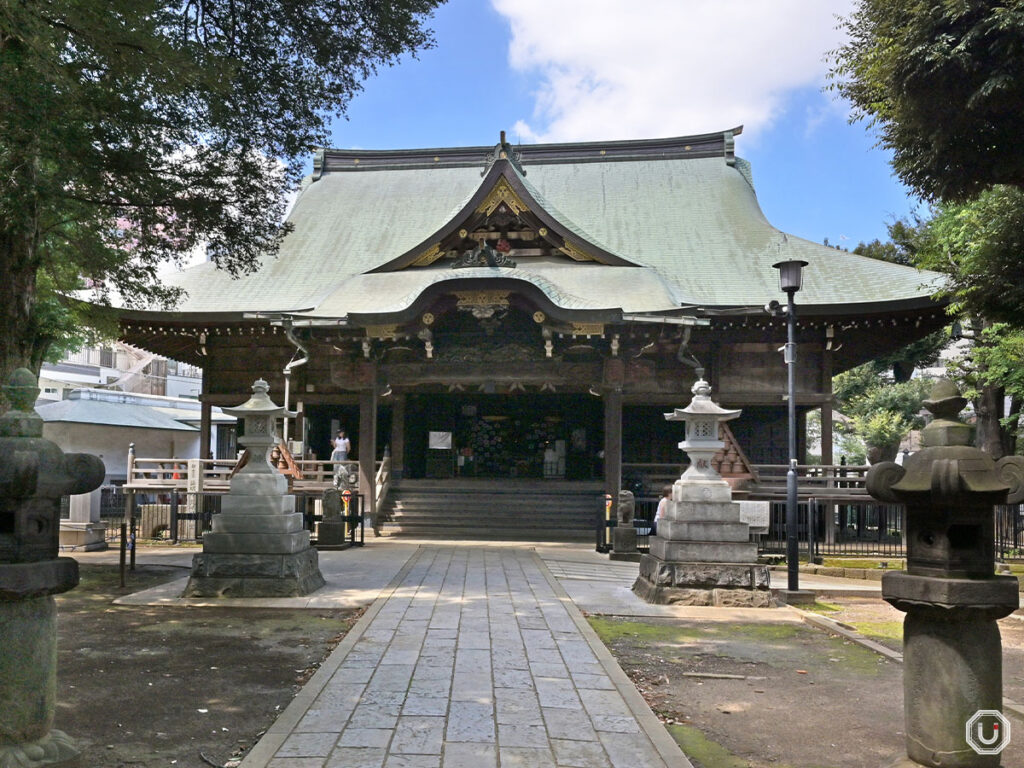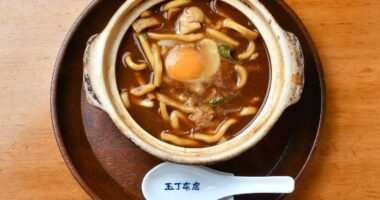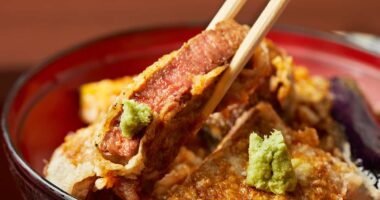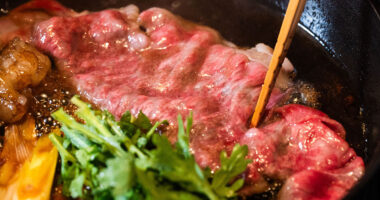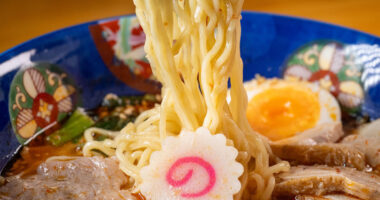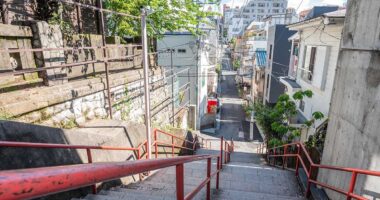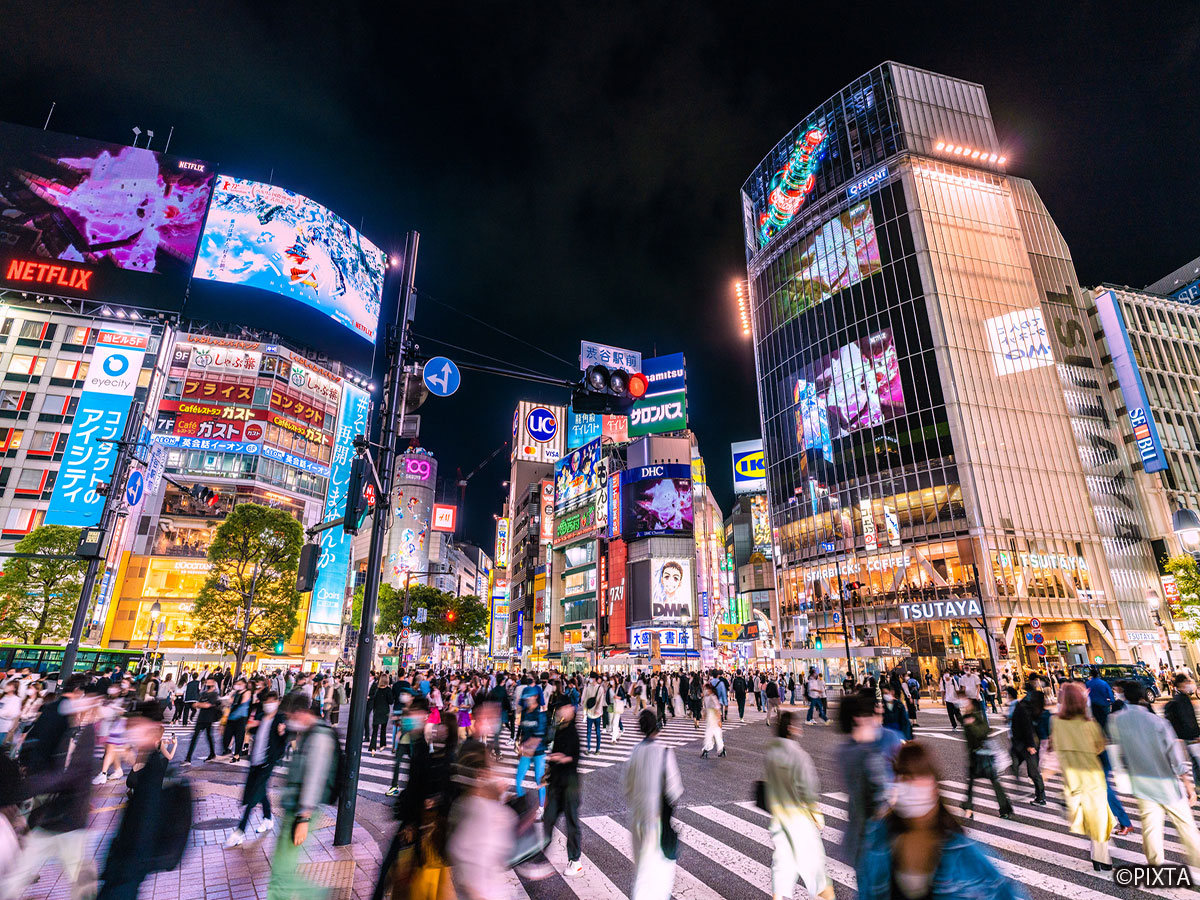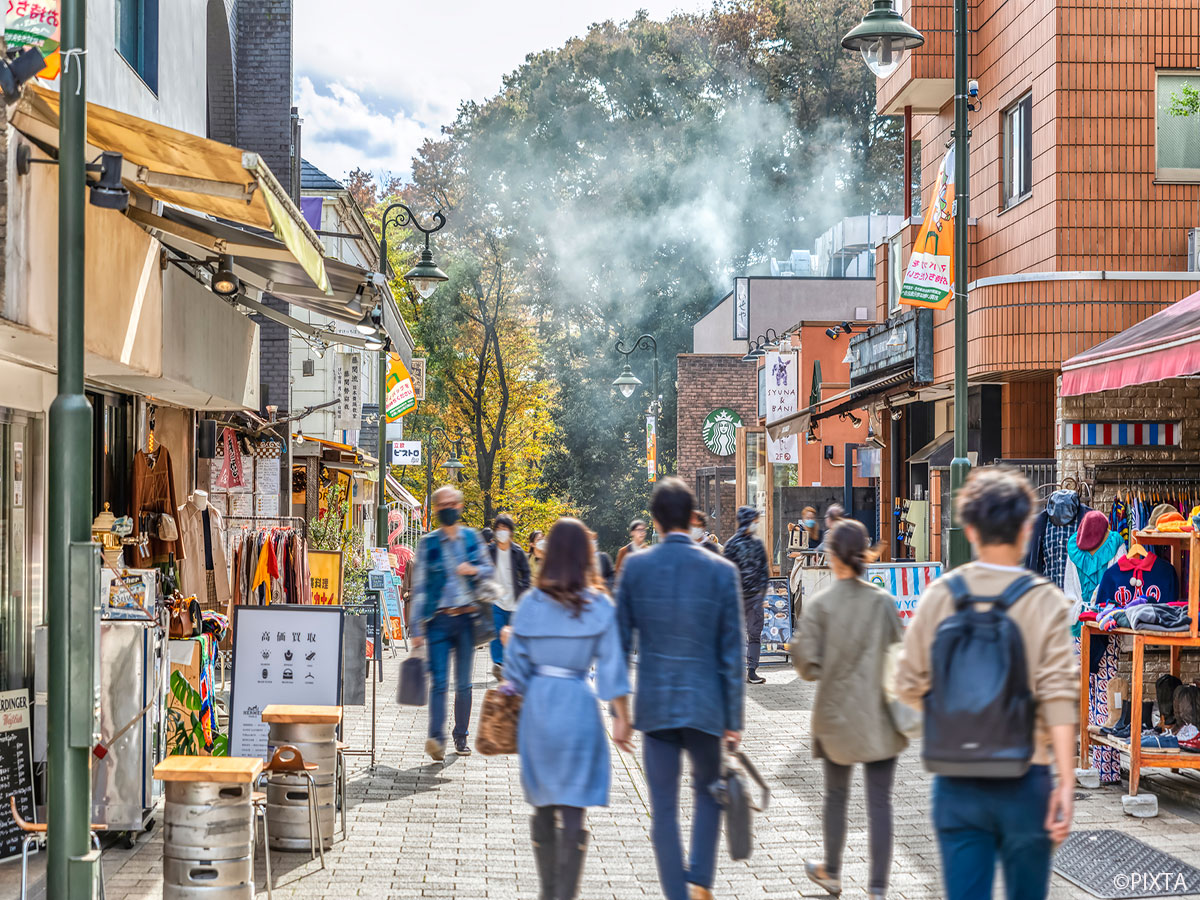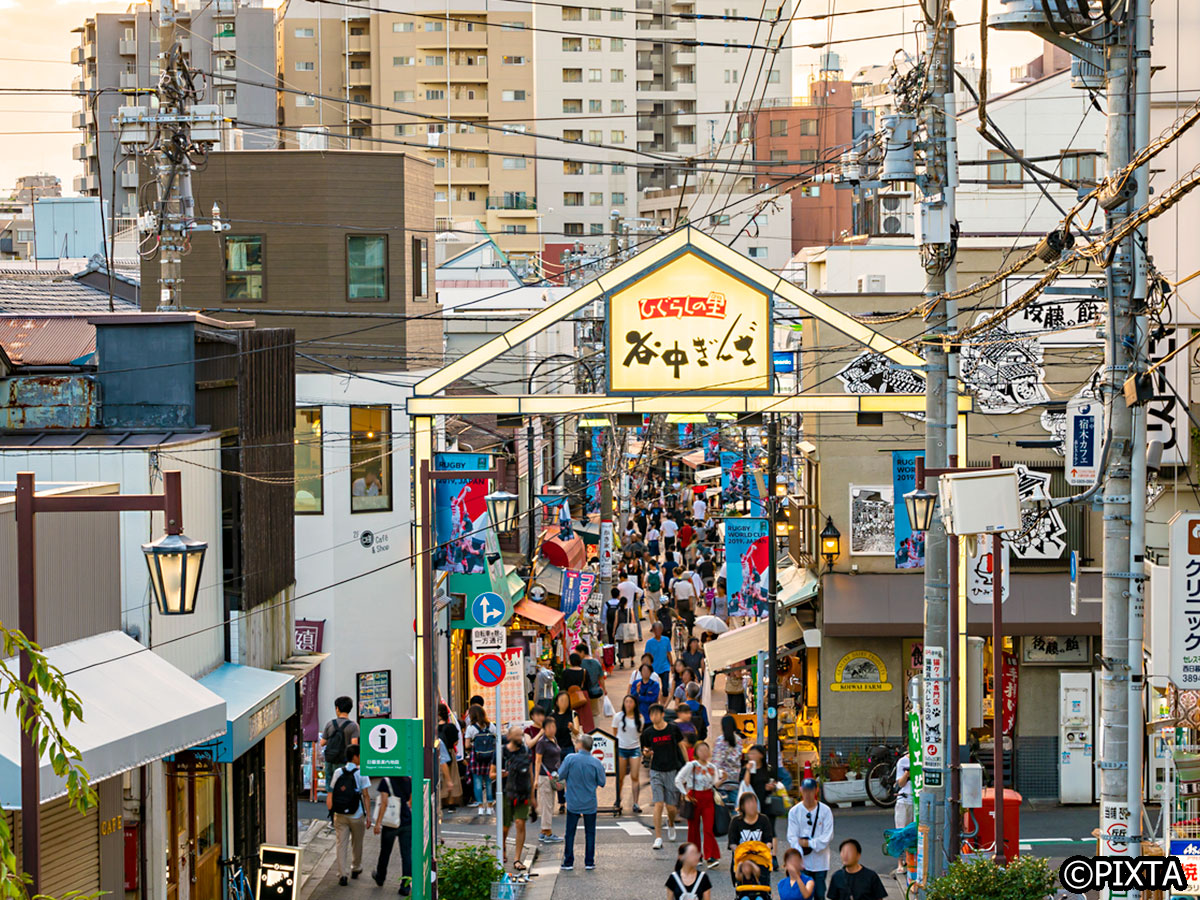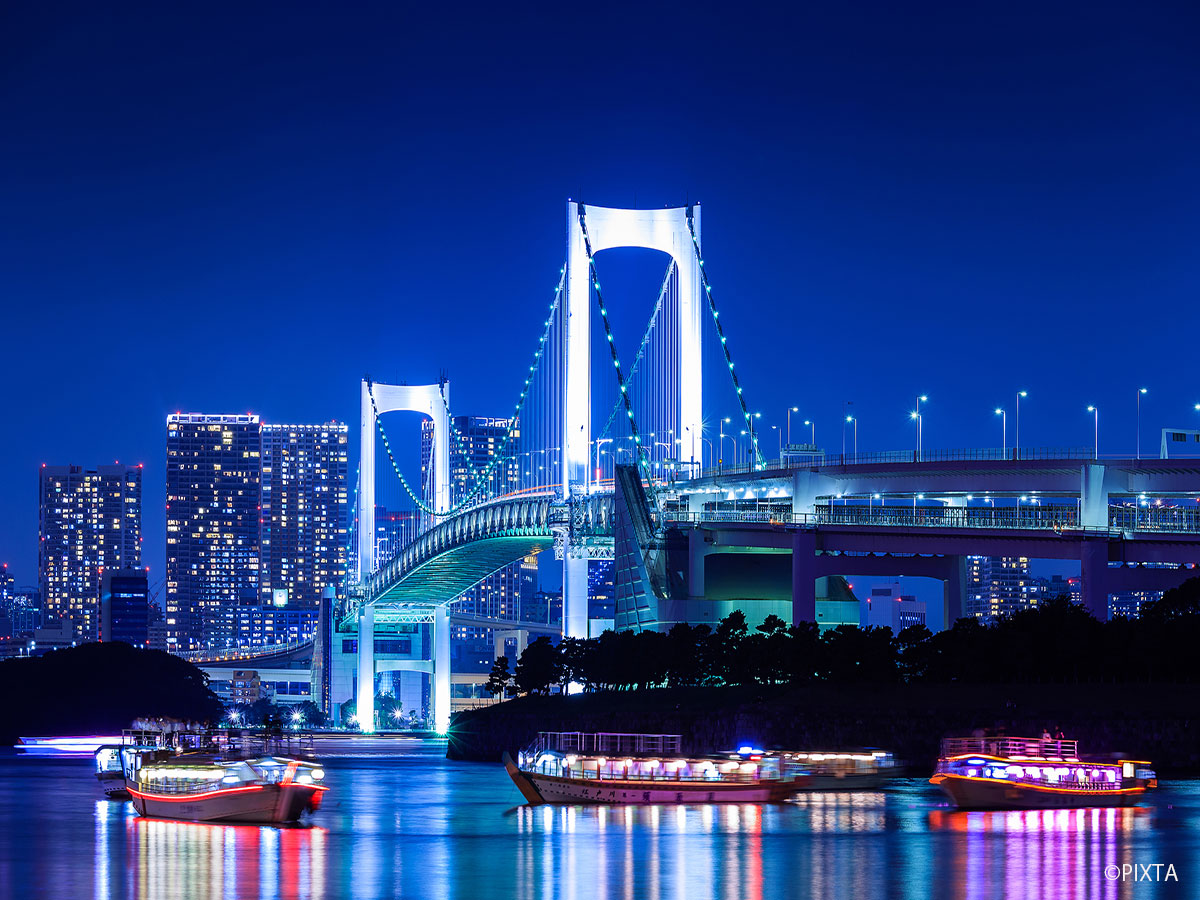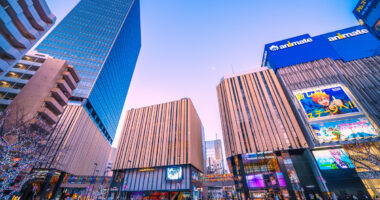In the midst of a quiet residential neighborhood, there is a scene that looks as though time has stood still. Deep within the grounds of a temple, surrounded by lush greenery, stands a solid and majestic hall.
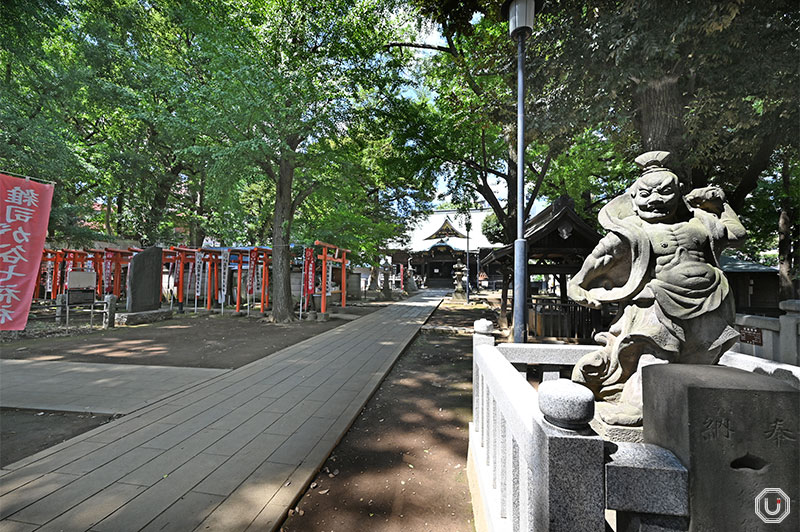
This is Zōshigayakishimojindō (also written Zōshigaya Kishimojindō), a Buddhist temple dedicated to the deity of safe childbirth and childrearing. You may find the scene familiar, as it has been depicted in several well-known anime works.
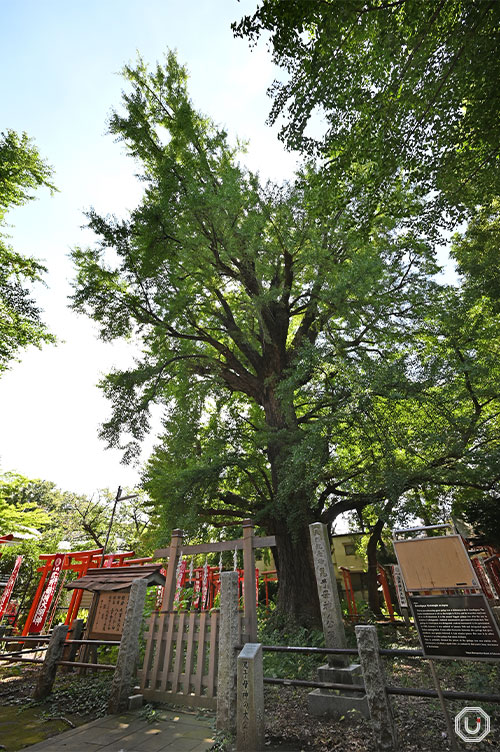
The deity enshrined here is Kishimojin. The name combines two seemingly contradictory kanji characters: oni (demon) and haha (mother). What kind of deity could this be?
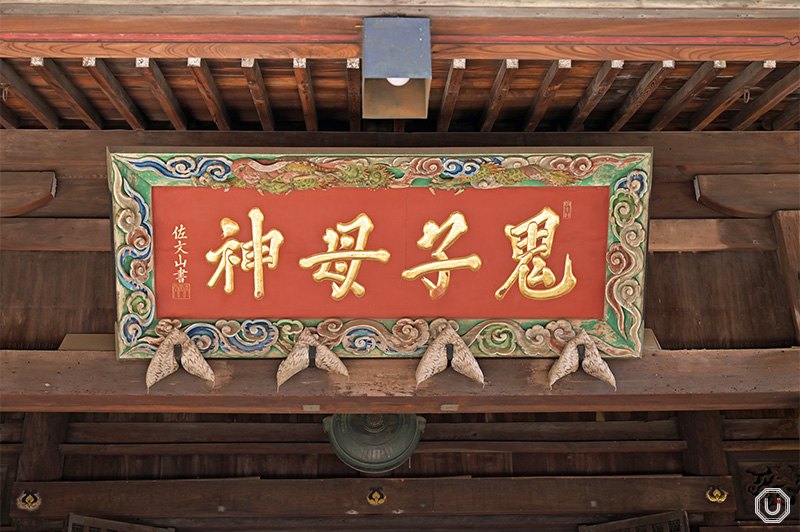
The oni kanji in Kishimojin is written without the initial dot.
The impressive zelkova-lined main approach
Zoshigayakishimojindo has attracted visitors since the Edo period. One of the most striking features is the main approach leading up to the temple. The tall zelkova trees line both sides of the path, creating a stately canopy. It’s said that the trees used to be even larger in the past.
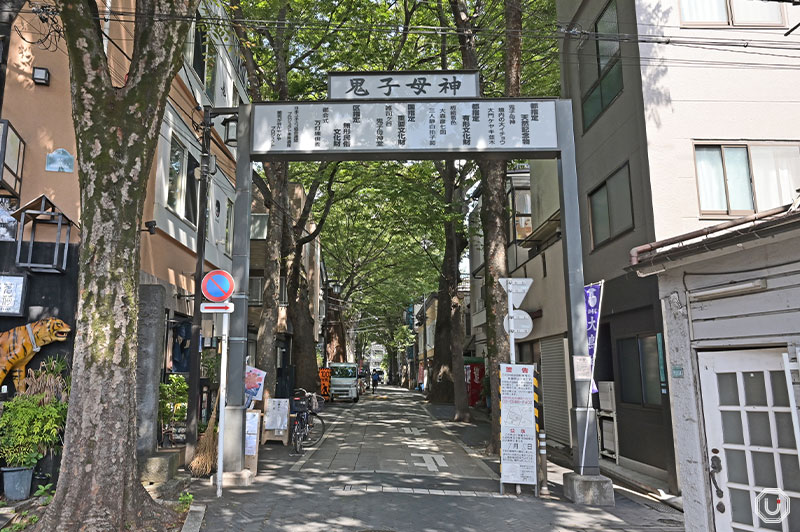
During the Edo period, this street was lined with tea houses and traditional restaurants, but today, it is mostly residential. The quiet, calming atmosphere of the area will naturally put your mind at ease.
What kind of deity is Kishimojin?
At the end of the main approach, to your left, you will see the lush, green temple grounds and Kishimojindo Hall. As you enter, you’ll notice the stone-paved path, guarded by two statues representing Niō on either side. Niō are two wrathful and muscular guardians of the Buddha, Guhyapāda and Nārāyana, known in Japan as Agyō (depicted with an open mouth) and Ungyō (depicted with a closed mouth). These guardians protect the temple with their strong, imposing presence.
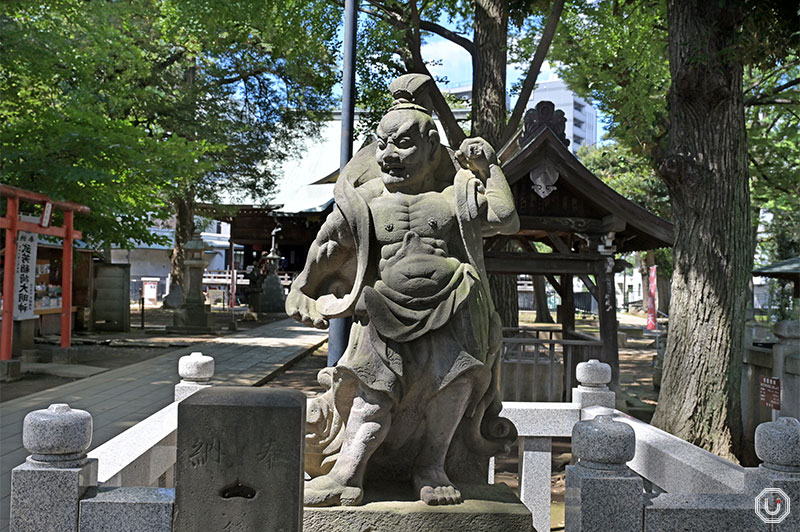
The Agyō statue stands to your right as you face the worship hall
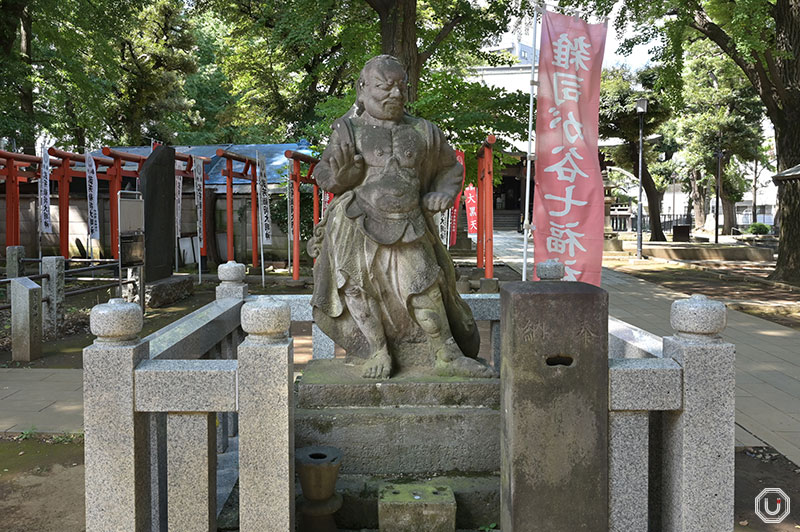
The Ungyō statue stands to your right as you face the worship hall
While there are many points of interest in the temple grounds, your first stop should be the Kishimojindo Hall itself. Pay your respects by offering a coin as a token of gratitude, and quietly pressing the palms of both hands together in front of you.
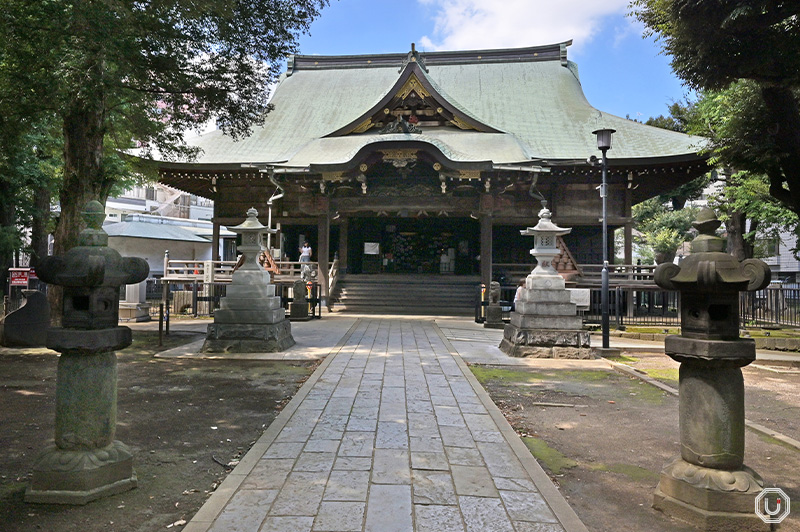
Kishimojindo Hall
You can also purchase omamori (protective amulets) and receive a goshuin (special seals received at Japanese shrines and temples) at the side of the hall.
A particularly interesting item is a traditional souvenir in the shape of a horned owl made from the ears of Japanese pampas grass. This is a well-known memento for visitors to Zoshigayakishimojindo.
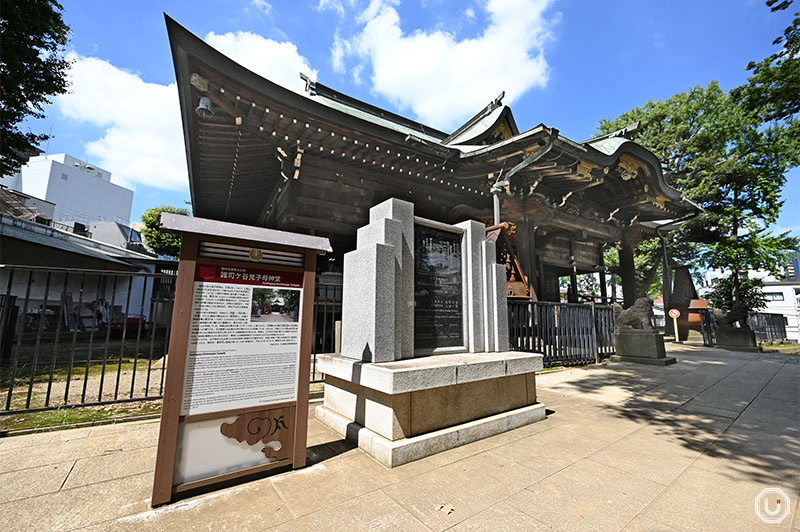
The deity Kishimojin, enshrined at Zoshigayakishimojindo, was originally an ogress who kidnapped and ate children from the nearby village, striking fear into the hearts of the people. However, after being guided by the teachings of the Buddha, she realized the error of her ways and repented. From then on, Kishimojin vowed to protect children and became a deity of safe childbirth and childrearing, earning the respect of the people.
The statue of Kishimojin is located to the right of the worship hall.
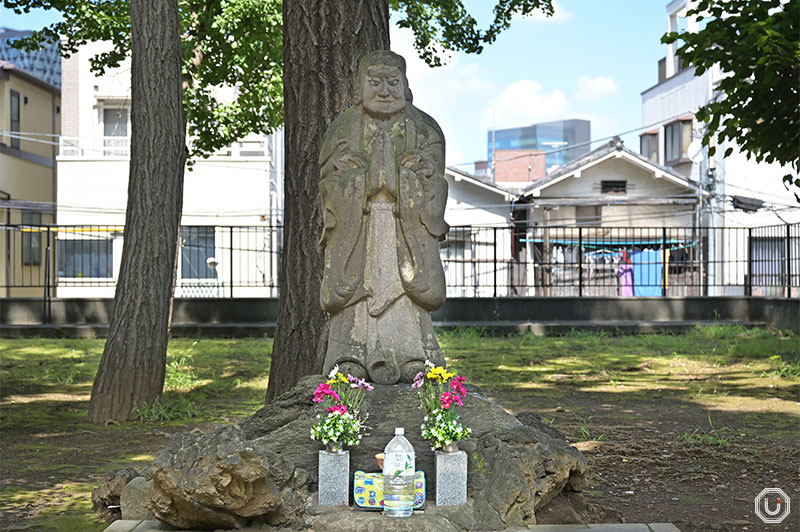
Statue of Kishimojin
With her calm expression and hands placed together in prayer, it’s hard to imagine that this deity was once a terrifying ogress. The statue conveys her transformation and how she came to be beloved by the people. Kishimojin is often enshrined as a guardian deity in temples of the Nichiren and Hokke Buddhist sects.
Zoshigayakishimojindo, along with Kishimojin temples in Taito City, Tokyo, and Ichikawa City, Chiba Prefecture, is considered one of the “Three Great Kishimojin of Edo.” Visiting the other Kishimojin temples is highly recommended.
The Great Ginkgo tree and the Shusse Inari-Jinja Shrine
After visiting Kishimojin, take your time exploring the grounds. To your left when you enter the temple grounds stands a massive tree, known as the “Great Ginkgo of Kishimojin.”
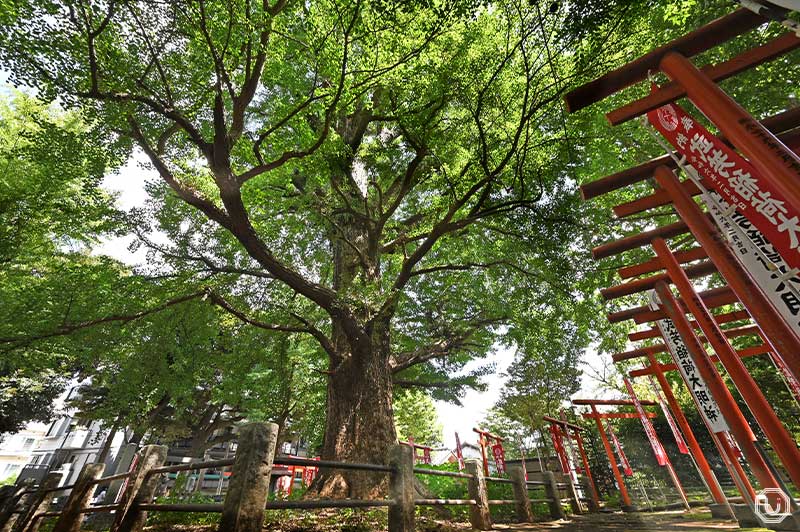
The ginkgo is estimated to be around 700 years old, with a trunk circumference of 8 meters (26.2′) and a height exceeding 30 meters (98.4′). The enormous tree, brimming with green leaves, exudes a powerful vitality that suggests it will continue growing for years to come. Just gazing at it is enough to feel its impressive energy.
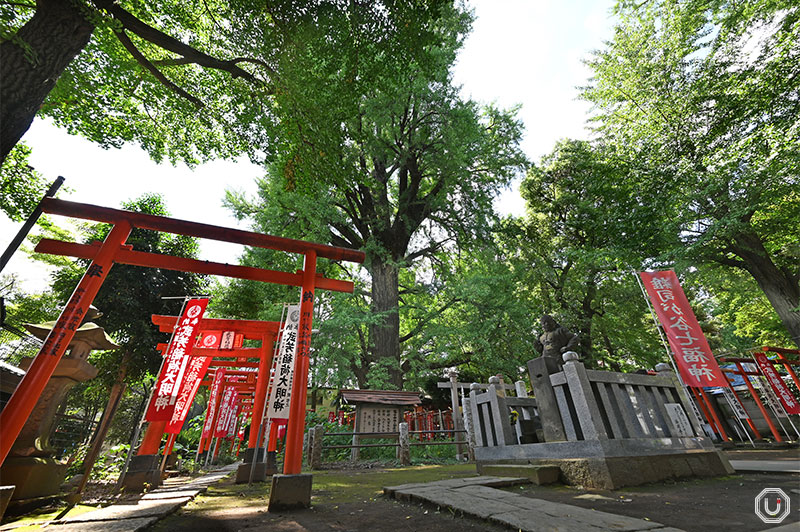
Surrounding the ginkgo are rows of red torii gates, marking the path to the Takeyoshi Inari Shrine.
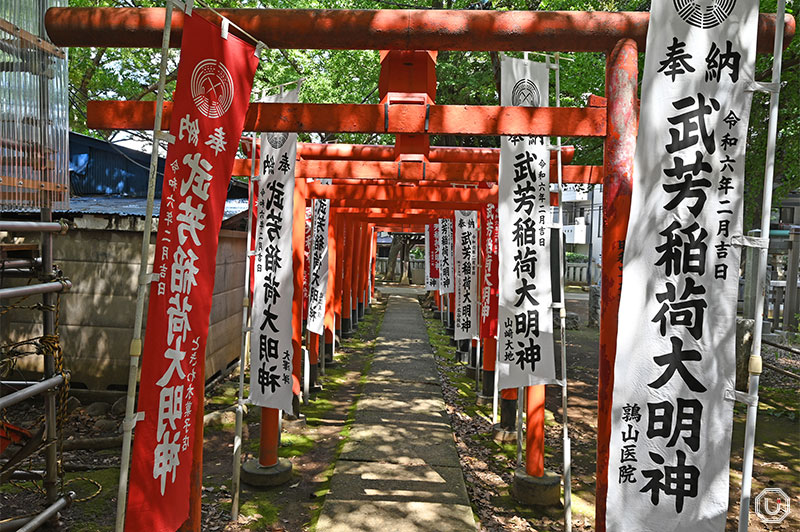
This shrine was established even earlier than Zoshigayakishimojindo, and has long been known by another name, the Shusse Inari-Jinja (shusse meaning personal and professional success or advancement). And indeed, it is believed to bring blessings for business success, good fortune, and warding off evil, thus drawing many devoted followers.
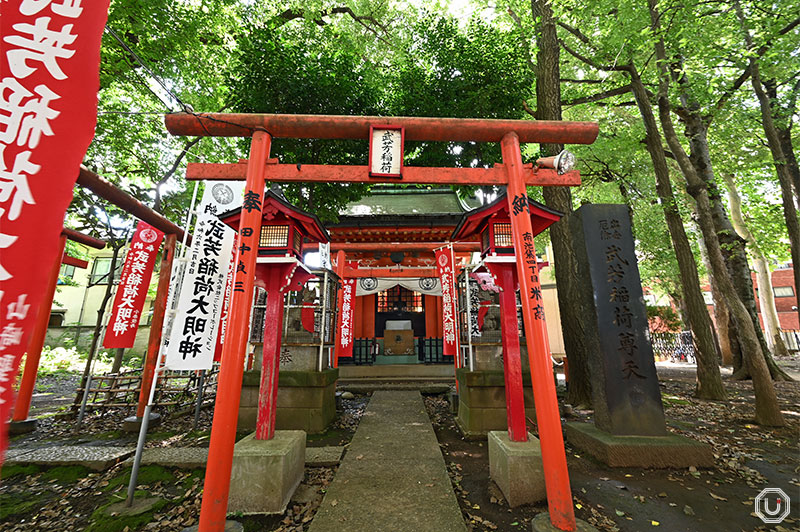
The Takeyoshi Inari Shrine
Enjoy osen dango and traditional sweets
At Daikokudō, located within the grounds of Zoshigayakishimojindo, you can purchase the famous osen dango. These dumplings are said to bring blessings for safe childbirth, and are available for both dine-in and take-out.
Daikokudo is open only on festival days (the 8th, 18th, and 28th of each month) and weekends, so if you’re eager to try the dumplings, be sure to plan your visit accordingly.
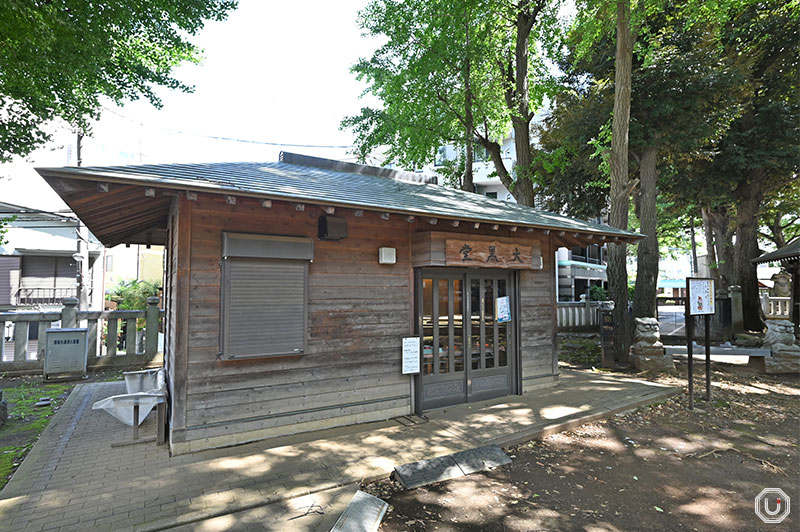
Daikokudo
Across the main approach from Daikokudo, you’ll find a small shop selling dagashi. These are inexpensive treats, some priced as low as 10 yen, and can be easily enjoyed by anyone. Dagashi shops are often found near elementary schools, and they used to be bustling with children. Even now, in 2024, there are still dagashi shops across Japan, but they are far fewer compared to the past.
After visiting Zoshigayakishimojindo, why not stop by the dagashi shop and take a look?
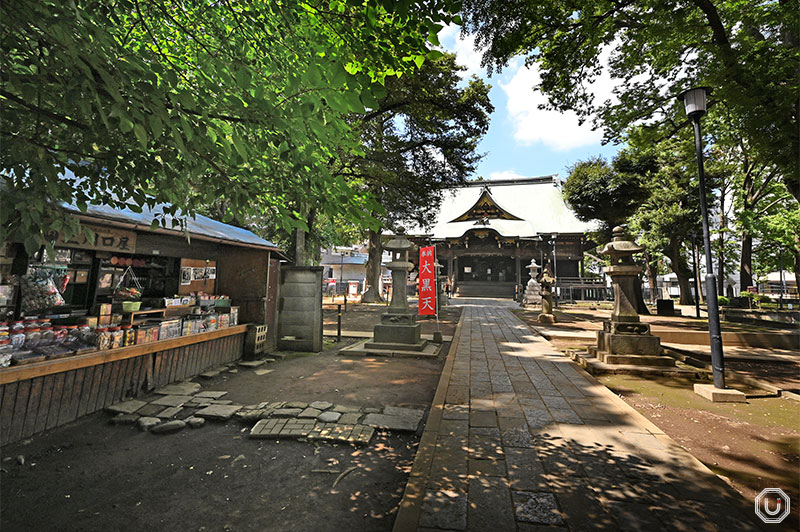
The shop offers small kinakomochi (treats flavored with roasted soybean flour), plum-flavored jam, yogurt-flavored treats, and fugashi (a sweet, puffed wheat snack coated in brown sugar), among other traditional items. The selection has remained unchanged for decades.
Whether you’ve enjoyed these sweets as a child or are trying them for the first time, they are sure to evoke a nostalgic feeling.
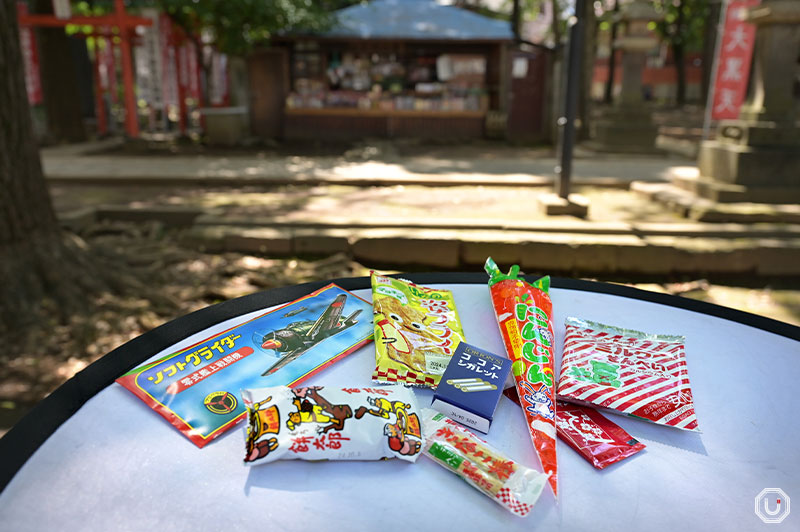
There are other sights to see on the temple grounds as well. Take your time to stroll around, relax, and soak in the tranquil atmosphere of Zoshigayakishimojindo.
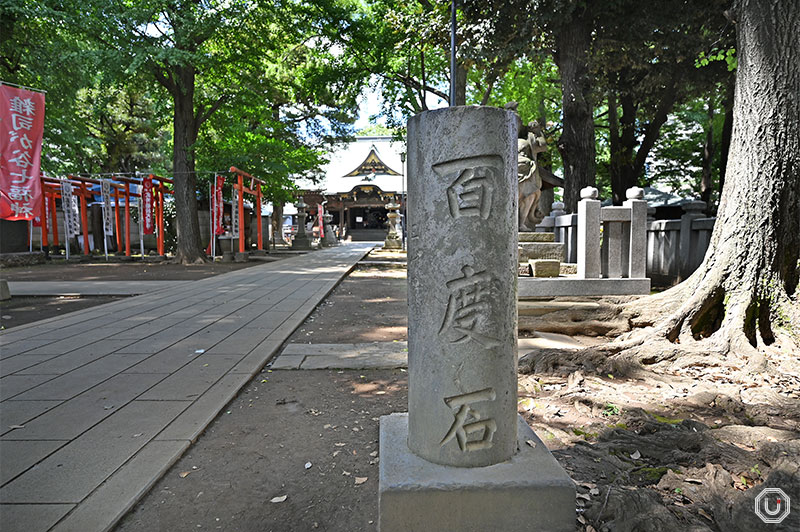
A hyakudoishi, a stone marker symbolizing 100 times of worship
Temple Information
| Name | 雑司ヶ谷鬼子母神堂 Zōshigayakishimojindō |
|---|---|
| Address | 3-15-20 Zōshigaya, Toshima-ku, Tokyo
|
| Access |
Kishibojimmae Station 4-minute walk from Kishibojimmae Station
Zoshigaya Station 5-minute walk from Exit 1
Ikebukuro Station 15-minute walk from Ikebukuro Station East Exit
|
| Phone number | 03-3982-8347 |
| Visiting hours | 9:00-17:00 |
| Sacred items | Available from 9:00-17:00 |
| Goshuin | Available from 9:00-17:00 |
| Omikuji | Available from 9:00-17:00 |
| Admission fee | Free |
| Official website | https://www.kishimojin.jp/index.html |
| Other information |
|
※The information in this article is current as of October 2024.
